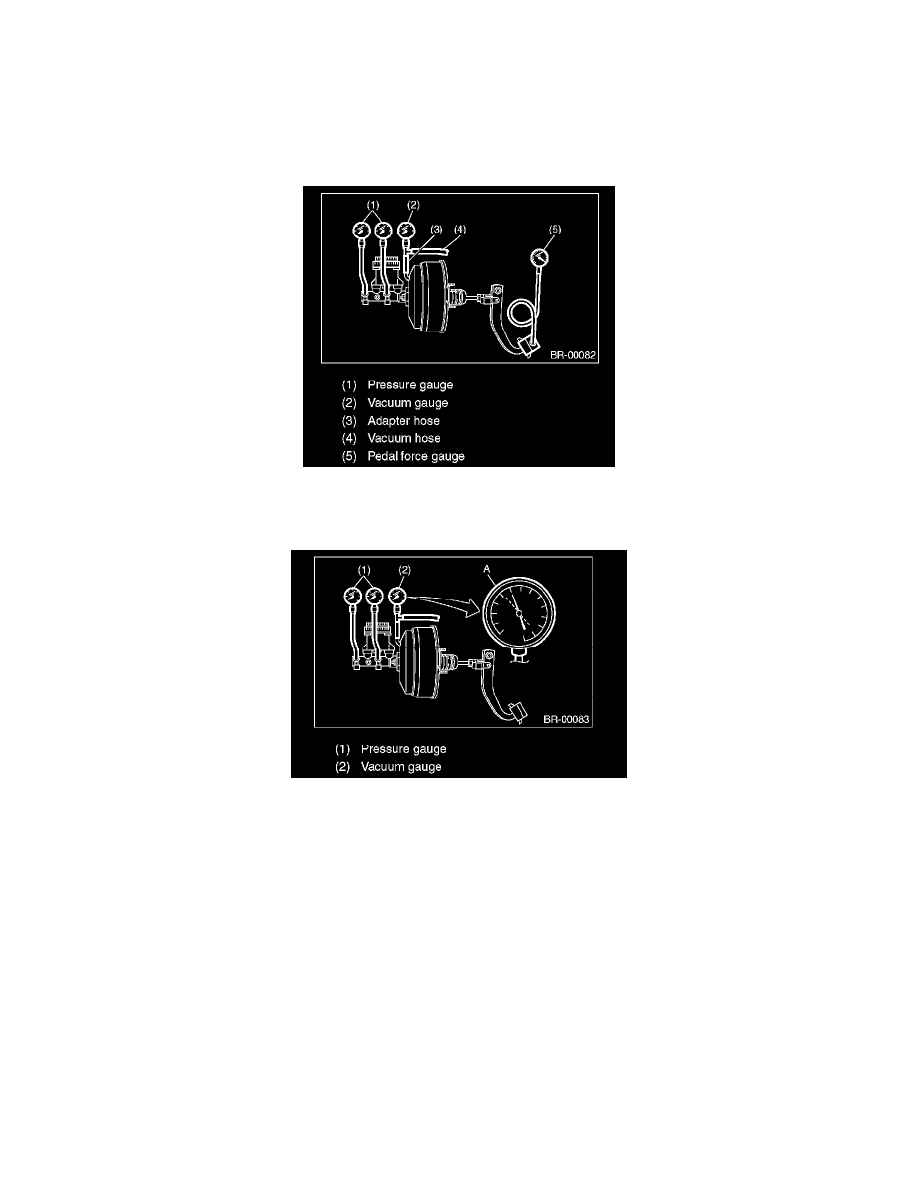Outback F4-2.5L DOHC Turbo (2006)

NOTE: If faulty, check precisely with gauges.
OPERATION CHECK (WITH GAUGES)
CAUTION: When checking operation, be sure to securely apply the parking brake.
^
CHECKING WITH GAUGES
Connect gauges as shown in the figure. After bleeding air from pressure gauges, proceed to each check.
^
AIR TIGHTNESS CHECK
1. Start the engine and keep it running until a vacuum of 66.7 kPa (500 mmHg, 19.69 inHg) = point A is indicated on vacuum gauge. Do not
depress the brake pedal at this moment.
2. Stop the engine and watch the gauge. If the vacuum drop range is less than 3.3 kPa (25 mmHg, 0.98 inHg) within 15 seconds after stopping the
engine, brake booster is functioning properly.
If defective, the cause may be one of those listed below.
^
Check valve malfunction
^
Leak from vacuum hose
^
Leak from shell jointed portion or stud bolt welded portion
^
Damaged diaphragm
^
Leak from valve body seal and bearing portion
^
Leak from plate and seal assembly portion
^
Leak from poppet valve assembly portion
^
LOADED AIR TIGHTNESS CHECK
